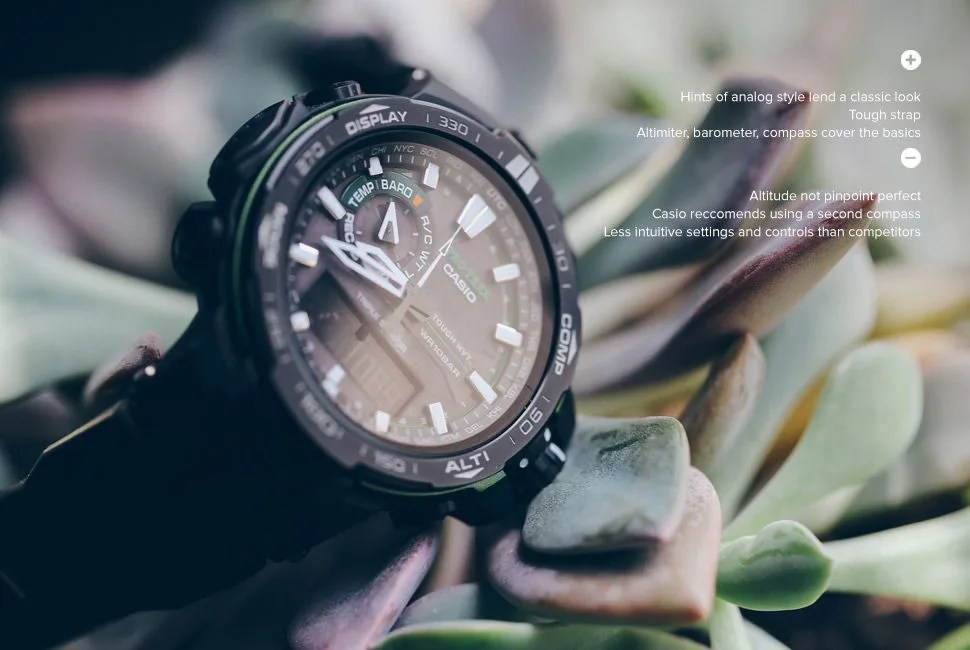While Casio’s G-Shock series has the extreme sports arena on lock down, their ProTrek line is blazing a trail in the world of outdoor adventure. The PRW-6000Y-1A ($500) is made for the aspiring ambler. In many ways, it’s about the most trustworthy, comely companion a beginning mountaineer could need.
MORE HANDS-ON REVIEWS: Bontrager Aura 5 Wheelset | Patagonia R1 Wetsuit | Sportcrafters Omnium Bicycle Trainer
For a watch so analog in appearance — its large dial is complemented by a smaller function dial on the face — the ProTrek carries with it a bundle of digital smarts. The brains rest in Casio’s Version 3 Triple Sensor technology, integrating an altimeter, barometer, and compass (ABC). Coupled with the trifecta is a thermometer, atomic timekeeping that keeps the ticks on track, and a solar-powered battery that gives infinite mobility without the need for a charge.
On the wrist, the watch wears comfortably, although its weighty presence isn’t easily forgotten. The carbon fiber band may seem gratuitous at first, but a band that ostensibly lives on forever is a good thing. The watch is water- and sweat-resistant and handles well on light swims, as well as during switchback hiking and light jogs.
Whereas most multifunction chronographs are more geared towards user-friendliness than ruggedness, the ProTrek comes off as a bit of a throwback to an earlier era — a time when users found pride in doing some squinty-eyed reading to decipher the manual. The how-to of the ProTrek’s 11 settings aren’t instinctive, but Casio’s directions are clear and eventually using the watch becomes intuitive.
The altimeter and compass get their own buttons and are at your ready disposal, making clear the watch’s intentions (finding your way while going up). In ascending and descending elevation the altimeter is decently reliable, but Casio’s own reminder to “perform regular calibrations” is apt. Altitude is calculated based on barometric pressure, and it often wasn’t pinpoint accurate. The compass was spot on during testing, even though Casio also caveats that “for serious trekking and mountain climbing” you’d be best to bring along a second compass to confirm. For $500, you’d probably prefer to not have to double-check.
The watch is smart, and it’s a solid workhorse. Small touches like Casio’s “hand shift” (the hands automatically move away from the digital display when using one of the functions) are good reminders that this timepiece is extremely intelligent; but features like the LED light — which gives just a pinprick of light at night — aren’t brilliant. For the watch’s price, I’d also be tempted to look for some of the perks of a GPS-capable watch, and a more visible digital display (Garmin’s trail wearables come to mind).
